Welcome to the enigmatic world of Greek mythology and the celestial wonders of the Hydra constellation. In this captivating article, we will delve into the mysterious connection between this celestial serpent and the ancient Greek tales that have fascinated us for centuries. Prepare to be amazed as we explore the origins of the Hydra, its role in legendary heroes’ tales, and its representation in art and literature. We will unravel the intriguing link between mythology and astronomy, examining the symbolic connections within the arrangement of stars in the Hydra constellation. Join us on this cosmic journey as we unlock the historical, cultural, and modern interpretations surrounding this enigmatic celestial enigma.
Contents
- The Legend of the Hydra
- Hydra: A Celestial Serpent
- Hydra in Greek Mythology
- Astronomy and Mythology Collide
- Interpreting the Hydra Constellation
- Hydra: A Cosmic Enigma
- Conclusion
-
Frequently Asked Questions
- 1. How many heads did the Hydra have?
- 2. What was the Hydra’s weakness?
- 3. Was the Hydra considered immortal?
- 4. Were there any heroes who successfully defeated the Hydra?
- 5. What other mythological creatures held a similar level of threat as the Hydra?
- 6. Did the Hydra possess any other powers?
- 7. Why was the Hydra considered a formidable foe even for the gods?
- 8. How did the Hydra become associated with the constellation of Hydra?
- 9. Are there any other cultures that have myths or legends involving a hydra-like creature?
- 10. How does the Hydra symbolize the concept of resilience and adaptability?
- References
-
Frequently Asked Questions
- 1. How did the Hydra constellation get its name?
- 2. What is the significance of the Hydra constellation in Greek mythology?
- 3. How can we observe the Hydra constellation in the night sky?
- 4. Are there any other mythological references in the star patterns of the Hydra constellation?
- 5. What are some of the origins and mythological significance of the Hydra in Greek mythology?
- 6. How did the Hydra play a role in heroes’ tales?
- 7. How is the Hydra constellation represented in art and literature?
- 8. What is the mythological context of the star arrangement within the Hydra constellation?
- 9. Can symbolic connections be made between the Hydra constellation and other elements of Greek mythology?
- 10. What are some modern interpretations of the Hydra constellation?
- References
- Read More
The Legend of the Hydra
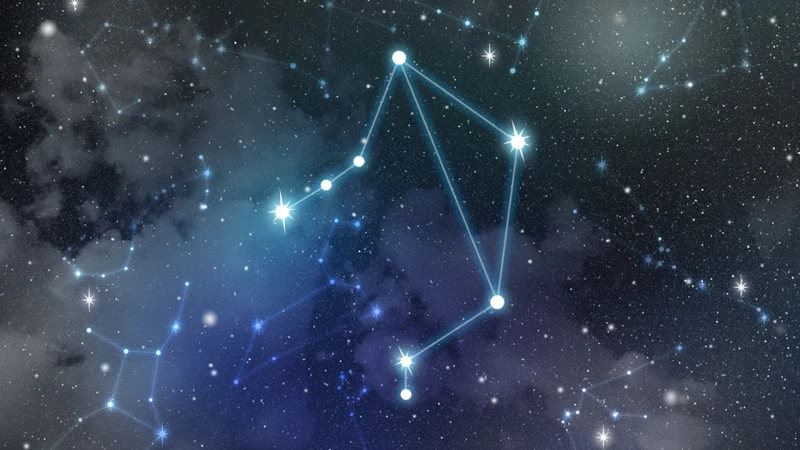
In the realm of ancient Greek mythology, the legend of the Hydra takes center stage. This fearsome creature, with its serpentine body and multiple heads, has captivated minds for centuries. According to the myth, the Hydra was born from the forbidden union of the monstrous Typhon and the snake-haired monster Echidna. Its lair was said to be the treacherous swamps of Lerna, where it lurked in the depths, ready to strike. The Hydra possessed a unique ability – each time one of its heads was severed, two more would grow back in its place, making it nearly impossible to defeat. This mythological creature posed a great threat to both mortal heroes and the gods themselves, with tales of epic battles against the Hydra spreading far and wide. One of the most famous stories involving the Hydra is the tale of Hercules’ Twelve Labors. As part of his tasks, Hercules was ordered to slay the Hydra. With the help of his nephew Iolaus, Hercules managed to outwit the Hydra and ultimately eradicate the creature by searing the stumps of its heads to prevent regrowth. The legend of the Hydra serves as a testament to the formidable adversaries faced by ancient Greek heroes and the incredible feats they accomplished.
Hydra: A Celestial Serpent
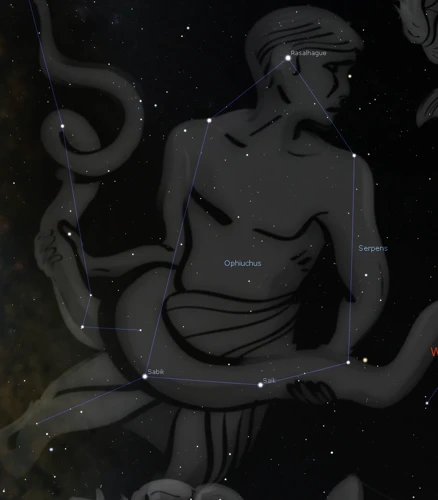
As we peer into the vast expanse of the night sky, we encounter the Hydra constellation, a celestial serpent that holds a place of intrigue and wonder. This constellation, often referred to as the “Water Snake,” winds its way through the heavens, stretching across a significant portion of the southern sky. The Hydra constellation is the largest of the 88 recognized constellations, covering an area of over 50 degrees. Its distinct shape, resembling a meandering snake, can be traced through the stars, and it includes several prominent deep-sky objects. One notable feature within the Hydra is the bright star Alphard, also known as the “Heart of the Hydra.” With its mystical allure, the Hydra constellation invites us to contemplate the harmonious dance between mythology and the cosmos, offering a glimpse into the captivating tapestry of the universe.
An Overview of the Hydra Constellation
The Hydra constellation, also known as the Water Snake, is one of the largest constellations in the night sky. Spanning an area of over 1000 square degrees, it winds its way through the celestial sphere, stretching from Cancer to Libra. The Hydra constellation is most easily visible during the spring and summer months in the Northern Hemisphere. The main feature of the Hydra constellation is its long and sinuous body, resembling a winding snake. It is composed of various stars, including Alphard, the brightest star within the constellation, which translates to “the solitary one” in Arabic. Other notable stars within the Hydra constellation include Alpherg, Beta Hydrae, and Gamma Hydrae. The Hydra constellation holds a special place in astrology as well, representing transformation, regeneration, and primal instinct. Its presence in the night sky sparks wonder and curiosity, inviting stargazers to explore the depths of its mythological and astronomical significance.
Mythological References in Star Patterns
When exploring the Hydra constellation, we uncover fascinating mythological references embedded within its star patterns. This celestial serpent, also known as the “Water Snake,” spans a vast area in the southern hemisphere. Its stars form a distinctive shape that resembles a winding snake or a series of interconnecting loops. Ancient civilizations, including the Greeks, attributed great significance to these star patterns, often weaving them into their mythical narratives.
One of the most prominent mythological references in the Hydra constellation is its connection to the second labor of Hercules – the defeat of the Hydra. As Hercules battled the multi-headed serpent, it is believed that the gods immortalized this feat by placing the Hydra among the stars. Its celestial representation serves as a reminder of the heroic deeds accomplished by the legendary demigod.
Another significant mythological reference associated with the Hydra constellation is its connection to the goddess Hera. In Greek mythology, Hera was known for her vengeful nature and her relentless pursuit of Hercules due to his status as an illegitimate child of Zeus. The Hydra, being one of Hera’s many creations, holds symbolic importance in this context.
These mythological references in the star patterns of the Hydra constellation bring a sense of wonder and intrigue. They serve as a testament to the storytelling prowess of ancient civilizations and their desire to immortalize legendary creatures and heroes in the cosmos.
Hydra in Greek Mythology
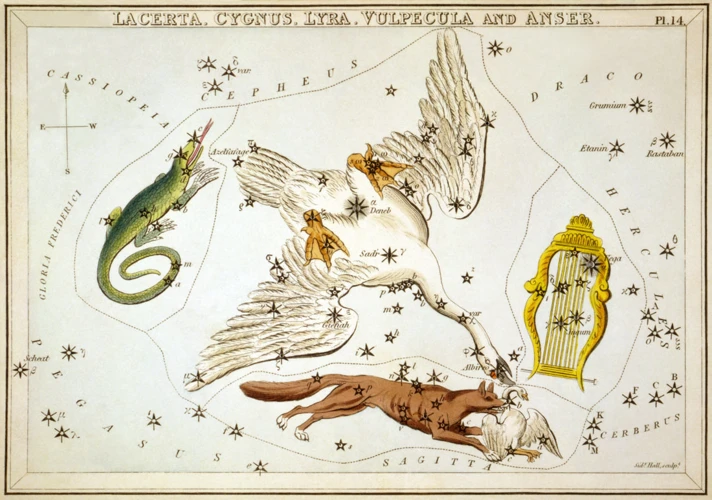
In the vast tapestry of Greek mythology, the Hydra holds a significant place. This serpentine creature finds its roots in ancient tales and serves as a symbol of ferocity and resilience. The Hydra’s origins and mythological significance trace back to its monstrous parentage as the offspring of Typhon and Echidna. Its treacherous lair in the swamps of Lerna became the stuff of legends. The Hydra’s unique ability to regrow its heads made it a formidable adversary for mortal heroes and even the gods themselves. The Hydra’s role in heroes’ tales is highlighted in the legendary Twelve Labors of Hercules, where the hero faces the challenge of defeating this fearsome creature. The Hydra’s representation in art and literature further solidifies its place in Greek mythology, immortalizing its terror and the heroic struggles undertaken to conquer it. This mythical creature continues to fascinate and intrigue, just like the other captivating figures in the realm of ancient Greek mythology.
Origins and Mythological Significance
The origins of the Hydra in Greek mythology can be traced back to ancient beliefs and symbolisms. The Hydra’s mythical significance stems from its representation of chaos, destruction, and unyielding power. The creature’s multiple heads and regenerative abilities symbolize the pervasive nature of evil and the difficulty in eradicating it completely. The Hydra’s habitat in the treacherous swamps of Lerna mirrors the underworld, further solidifying its association with darkness and the unknown. In Greek mythology, the Hydra often served as a formidable adversary, challenging the bravery and heroism of mortals and gods alike. Its defeat required not only physical strength but also wit and strategy. The mythical significance of the Hydra extends beyond its individual tales, reflecting the broader themes of struggle, perseverance, and the triumph of good over evil in Greek mythology. Its presence in myths and legends demonstrates the intricate understanding of the human psyche and the eternal battle between light and darkness. Through these stories, ancient Greeks sought to explore and make sense of the complexities of their world and the moral lessons embedded within. To learn more about the mystical connections between celestial bodies and mythology, take a peek into the celestial twins Gemini constellation and the intriguing role of zodiac signs in ancient Egyptian mythology.
Hydra’s Role in Heroes’ Tales
The Hydra played a significant role in the heroic tales of ancient Greece, leaving a lasting impression on both mortals and gods alike. One of the most renowned encounters with the Hydra was the story of Jason and the Argonauts. As they embarked on their quest to retrieve the Golden Fleece, the Argonauts faced numerous obstacles, and the Hydra stood as one of the most formidable challenges. It guarded the sacred grove of Ares, preventing anyone from reaching the fleece. In this epic battle, the hero Hercules once again played a crucial role. With his immense strength and bravery, Hercules fought alongside Jason and the Argonauts, severing the Hydra’s heads one by one. However, they soon discovered that this monstrous creature had a hidden secret – its poisonous blood. The Hydra’s blood was so venomous that it could be used as a deadly weapon. Recognizing this, the cunning Jason devised a plan to use the blood to his advantage. He dipped his arrows in the Hydra’s venom, creating lethal projectiles that would prove invaluable in future battles. This pivotal encounter showcased the Hydra’s treacherous nature and demonstrated the resourcefulness of the heroes who faced it. The tales of the Hydra’s role in heroes’ quests continue to inspire and fascinate to this day.
Representation in Art and Literature
The Hydra’s formidable presence and captivating mythology have inspired numerous artists and writers throughout history. Its representation in art and literature showcases the enduring fascination with this legendary creature. In ancient Greek pottery, the Hydra was often depicted as a fearsome serpent with multiple heads emerging from its body. These intricate designs captured the essence of the creature’s ever-multiplying heads, showcasing the challenges faced by those who dared to confront it. The Hydra also found its way into the works of renowned authors, such as Hesiod and Ovid, who incorporated the creature into their epic poems. The Hydra’s symbolism of resilience, regeneration, and the infinite struggle against adversity has made it a compelling subject for artists and writers alike. Its presence in contemporary works of art and literature continues to captivate audiences, serving as a reminder of the enduring legacy of Greek mythology and the Hydra’s indomitable spirit.
Astronomy and Mythology Collide
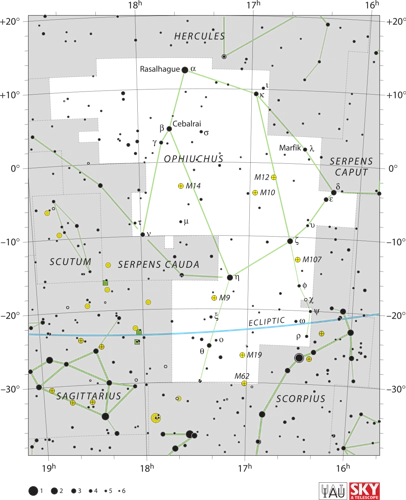
In a fascinating convergence of astronomy and mythology, the Hydra constellation emerges as a compelling link between the two realms. Named after the mythical creature, this celestial serpent winds its way through the southern skies, captivating stargazers with its mystique. The Hydra constellation is the largest of the 88 modern constellations, stretching across an area of sky that resembles the sinuous body of the legendary Hydra. This celestial marvel contains several notable stars, including Alphard, its brightest star, which means “the solitary one” in Arabic, aptly reflecting the Hydra’s solitary nature. The Hydra’s connection to mythology becomes apparent when we examine its star patterns. The ancient Greeks identified the Hydra with the serpentine creature that posed a significant threat to their pantheon of gods. The alignment of stars within the constellation reflects the mythical Hydra’s elongated body, with its multi-headed nature represented by various stars dotting its path. This interplay between astronomy and mythology allows us to explore the symbolic connections and delve deeper into the enigma of the Hydra constellation.
Interpreting the Hydra Constellation
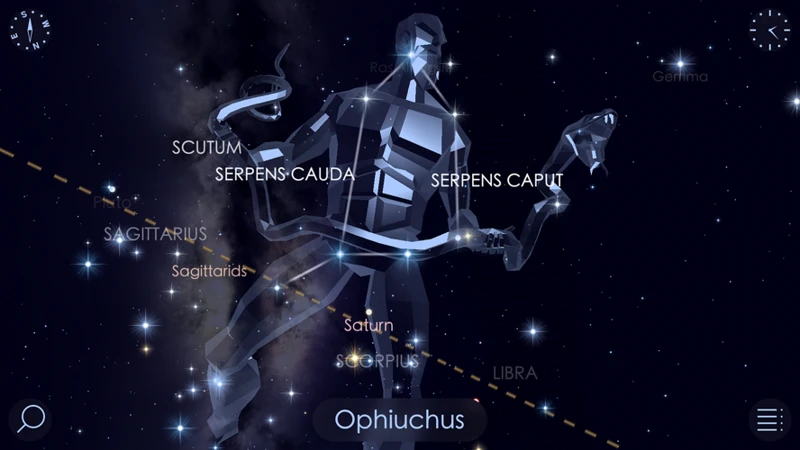
Interpreting the Hydra constellation allows us to delve deeper into the fascinating connections between mythology and the arrangement of stars in the night sky. The celestial serpent, composed of several faint stars, winds its way through the southern hemisphere. Drawing from the mythological context, we can speculate on the symbolic significance of this constellation. In Greek mythology, the Hydra was a formidable adversary, representing the unstoppable forces of chaos and destruction. Its portrayal in the stars may serve as a reminder of the eternal struggle between order and chaos, light and darkness. Explorations of the Hydra’s celestial symbolism can ignite our imagination, inviting us to ponder the deeper meanings behind the ancient Greeks’ fascination with these cosmic patterns. To further understand the Hydra constellation, astronomers and mythologists continue to delve into the historical and cultural impacts it has had throughout the ages.
The Mythological Context of Star Arrangement
When exploring the mythological context of star arrangement in the Hydra constellation, a fascinating connection emerges. Ancient Greek mythology often attributed celestial phenomena to the actions, feats, and narratives of their gods and heroes. The Hydra constellation, with its meandering shape and winding form, was believed to represent the fearsome water serpent of the same name from the legends. This arrangement of stars, scattered across the southern sky, mirrored the serpentine nature of the Hydra creature in mythology. It is intriguing to note that the Hydra constellation has no particularly bright stars, making it a challenging constellation to spot in the night sky. This aligns with the Hydra’s elusive and cunning nature in Greek mythology. While there may not be specific mythological stories directly associated with the individual stars of the Hydra constellation, the overall arrangement seems to symbolize the essence and character of the legendary creature it represents. The recognition of the Hydra constellation and its incorporation into the mythological fabric of ancient Greece showcases the profound significance of celestial bodies in their culture and beliefs.
Exploring Symbolic Connections
When exploring the symbolic connections within the arrangement of stars in the Hydra constellation, a deeper understanding of Greek mythology unfolds. The Hydra’s celestial representation appears to reflect its mythological significance, with its coiling serpentine shape mirroring the creature’s earthly form. In Greek mythology, serpents symbolize fertility, rebirth, and transformation. The Hydra’s multiple heads, constantly regenerating, can be interpreted as a representation of life’s challenges and obstacles that continuously arise, requiring adaptability and resilience. The Hydra’s association with water in mythology further enhances its symbolic connotations. Water often symbolizes emotions, subconscious realms, and the unknown. The Hydra’s dwelling in the swampy region of Lerna represents a liminal space, a threshold between the tangible and the mysterious. Considering these symbolic connections, it becomes evident that the Hydra constellation holds a deeper meaning beyond its mere astronomical presence. Its celestial representation encourages contemplation on the cyclical nature of life, the importance of adaptability, and the exploration of the depths of the human psyche.
Hydra: A Cosmic Enigma
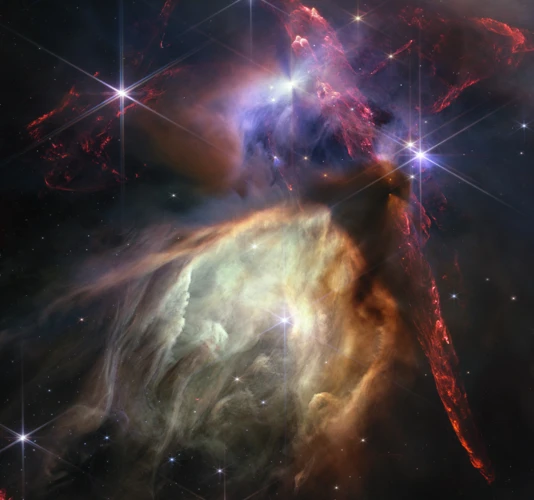
The Hydra, both in mythology and as a celestial constellation, remains a cosmic enigma that continues to fascinate scholars and stargazers alike. This serpentine creature, with its mythical origins and mysterious connections, has left an indelible mark on ancient Greek culture and beyond. Historically, the Hydra has been a symbol of both danger and regeneration, representing the cyclical nature of life and the challenges one must face. Its presence in art and literature further highlights its enigmatic nature and enduring relevance. Throughout history, the Hydra has been linked to other celestial wonders, including the planets and zodiac signs, creating a web of connections that adds to its cosmic mystique. While many interpretations of the Hydra have emerged over time, its true nature and significance remain a captivating enigma, inviting further exploration and contemplation.
Historical and Cultural Impact
The Hydra, with its rich mythological significance, has left a lasting impact on history and culture. This majestic creature has been a source of inspiration for countless artists, writers, and storytellers throughout the ages. In ancient Greece, the legend of the Hydra symbolized the challenges and obstacles that heroes had to overcome in their quests for glory. The Hydra’s ability to regenerate its heads resonated with the idea of resilience and the inherent struggle between good and evil. This captivating creature has been depicted in various forms of art, from ancient pottery and sculptures to modern-day paintings and illustrations. Its portrayal in literature, such as the works of authors like Hesiod and Apollodorus, further immortalized the Hydra in the realm of storytelling. The Hydra’s influence extends beyond Greek mythology and has seeped into popular culture. It has become a symbol of adaptability and strength in the face of adversity. Today, references to the Hydra can be found in movies, video games, and even in the names of companies and organizations. Its significance has endured through the centuries, reminding us of the enduring power of mythical creatures and their ability to leave a lasting mark on human history.
Modern Interpretations
Modern interpretations of the Hydra constellation have evolved over time, bridging the gap between ancient mythology and contemporary understanding. While the Hydra may still be associated with its mythical origins, it has acquired new symbolism and meaning in different contexts. In astrology, the Hydra is sometimes linked to the zodiac sign Cancer, which is represented by the crab. Cancer is associated with emotions, intuition, and nurturing qualities, reflecting the Hydra’s watery domain in the swamps of Lerna. Additionally, some believe that the Hydra’s ability to regenerate its heads symbolizes resilience and transformation. In popular culture, the Hydra has made appearances in various forms, including movies, books, and video games. These interpretations often tap into the creature’s mythical attributes, portraying it as a formidable and challenging adversary. The Hydra continues to captivate imaginations and serves as a reminder of the enduring power and allure of ancient Greek mythology.
Conclusion

In conclusion, the connection between the Hydra constellation and ancient Greek mythology is a fascinating exploration of the intersection between astronomy and storytelling. The legend of the Hydra, with its fearsome creature and indomitable nature, has captured the imaginations of people throughout history. Its presence in the night sky as a celestial serpent adds a layer of mystery and wonder to our understanding of the cosmos. The Hydra serves as a reminder of the rich mythological traditions that have shaped civilizations and provided insights into the human psyche. As we reflect on the mythological significance of the Hydra, we are reminded of the enduring power of mythology to both entertain and teach valuable lessons. The Hydra constellation stands as a testament to the enduring legacy of ancient Greek mythology and its ability to inspire wonder and awe. As we gaze upon the celestial heavens, we can’t help but marvel at the intricate web of stories that intertwines with the stars above. The Hydra’s mythological significance will continue to captivate and intrigue generations to come. For more celestial wonder, you may explore the role of zodiac signs in ancient Egyptian mythology or delve into the mystical connection between Jupiter and luck expansion.
Frequently Asked Questions

1. How many heads did the Hydra have?
The Hydra was said to have multiple heads, typically depicted as nine in number.
2. What was the Hydra’s weakness?
One of the Hydra’s weaknesses was the ability to regrow its heads. To defeat it, Hercules had to cauterize the stumps of the heads to prevent their regeneration.
3. Was the Hydra considered immortal?
The Hydra was not truly immortal, but its regenerative abilities made it incredibly difficult to kill. Cutting off its heads was a temporary solution, as they would promptly grow back.
4. Were there any heroes who successfully defeated the Hydra?
Yes, Hercules is among the heroes who managed to defeat the Hydra. This victory was part of his Twelve Labors, a series of challenges imposed upon him by King Eurystheus.
5. What other mythological creatures held a similar level of threat as the Hydra?
Other mythological creatures that posed significant threats included the Chimera, the Minotaur, and the Cyclops, each with their own unique abilities and challenges for heroes to overcome.
6. Did the Hydra possess any other powers?
Aside from its regenerative ability, the Hydra was also known for its poisonous breath and blood, which were said to be lethal and capable of causing fatal wounds.
7. Why was the Hydra considered a formidable foe even for the gods?
The Hydra’s ability to regenerate heads made it a formidable opponent, as standard methods of attacks could be easily countered. Its toxic breath and blood added to its threat, proving to be a challenge even for the gods.
8. How did the Hydra become associated with the constellation of Hydra?
The constellation of Hydra possibly received its name due to its long, winding shape, resembling a serpent-like creature. This connection between the mythical creature and the celestial object became ingrained in ancient Greek lore.
9. Are there any other cultures that have myths or legends involving a hydra-like creature?
Yes, various cultures and mythologies have tales of serpent-like creatures with multiple heads, such as the Lernaean Hydra in Greek mythology, the Yamata no Orochi in Japanese mythology, and the Nāgas in Hindu and Buddhist folklore.
10. How does the Hydra symbolize the concept of resilience and adaptability?
The Hydra’s ability to regrow its heads is often interpreted metaphorically to represent resilience and adaptability in the face of adversity. It serves as a reminder that sometimes, cutting off one problem only leads to the emergence of multiple new challenges that must be overcome.
References
Frequently Asked Questions

1. How did the Hydra constellation get its name?
The Hydra constellation is named after the mythological creature Hydra, a serpent-like monster with multiple heads.
2. What is the significance of the Hydra constellation in Greek mythology?
The Hydra constellation is associated with the Hydra of Lerna, a creature that Hercules had to defeat as one of his twelve labors.
3. How can we observe the Hydra constellation in the night sky?
The Hydra constellation can be observed in the southern hemisphere during the spring and early summer months. Look for its distinctive shape near the constellations of Leo and Virgo.
4. Are there any other mythological references in the star patterns of the Hydra constellation?
Yes, some star patterns within the Hydra constellation are associated with other Greek myths, including the story of Ladon, the dragon who guarded the golden apples in the Garden of the Hesperides.
5. What are some of the origins and mythological significance of the Hydra in Greek mythology?
The Hydra was said to be the offspring of the ancient sea serpent, Typhon, and the monstrous half-woman, half-serpent Echidna. It was considered a fearsome and deadly creature symbolizing chaos and destruction.
6. How did the Hydra play a role in heroes’ tales?
The Hydra was famously defeated by Hercules during his second labor. The creature’s regenerative powers made it a formidable opponent, as for every head Hercules cut off, two more would grow in its place.
7. How is the Hydra constellation represented in art and literature?
The Hydra constellation often appears as a writhing serpent in ancient Greek pottery, sculptures, and mosaics. It is also referenced in various works of literature, including the mythological poems of Hesiod and the plays of Euripides.
8. What is the mythological context of the star arrangement within the Hydra constellation?
The star arrangement of the Hydra constellation represents the serpentine body of the Hydra of Lerna, with the brightest star, Alphard, marking the creature’s heart.
9. Can symbolic connections be made between the Hydra constellation and other elements of Greek mythology?
Absolutely! The Hydra’s association with chaos and its defeat by a hero like Hercules symbolize the triumph of order and courage over adversity in Greek mythology.
10. What are some modern interpretations of the Hydra constellation?
Some modern interpretations suggest that the Hydra constellation represents the struggles and challenges we face in our own lives and the strength required to overcome them.







